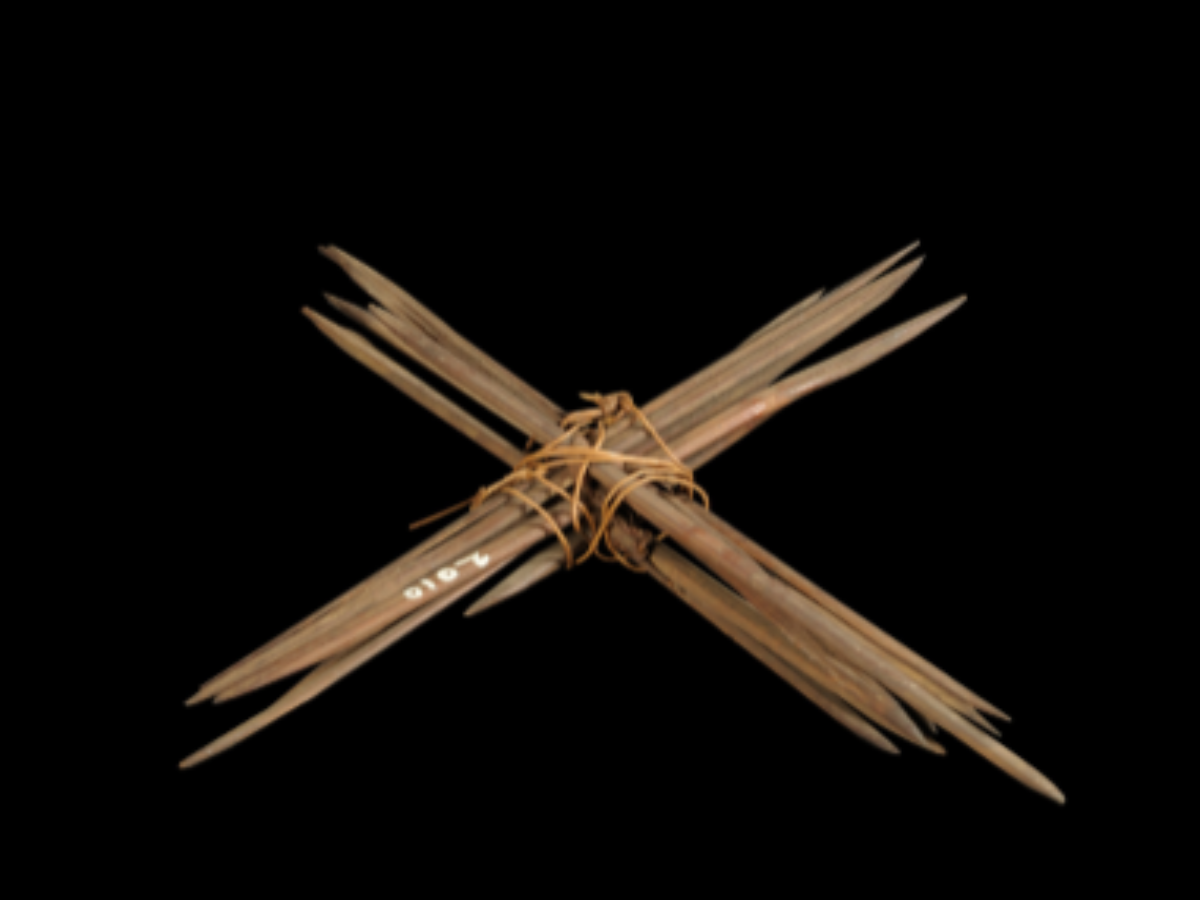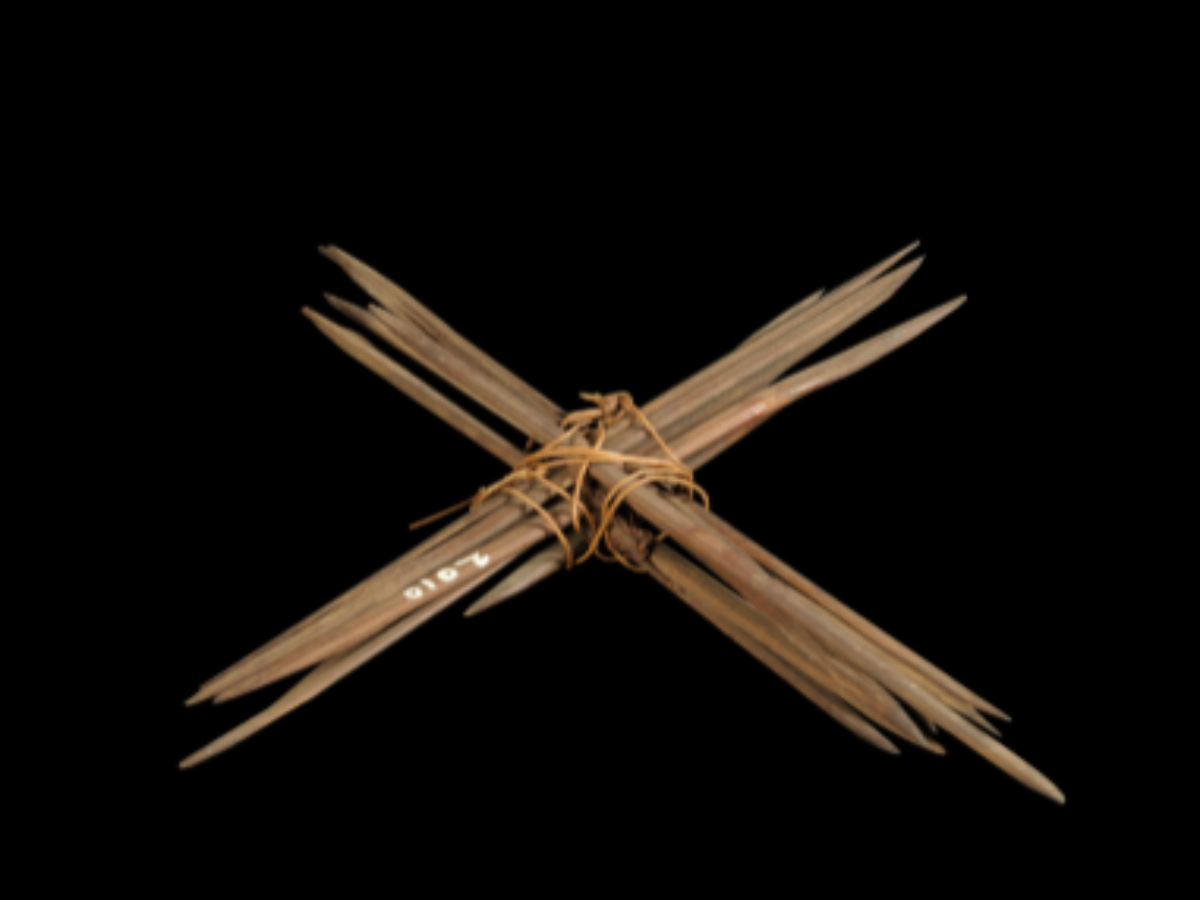State
Tribe Name
Art Type
short description
The Kispeh is a traditional bamboo tool used by the Khasi Tribe of Meghalaya best known for their sustainable alternative uses and craftsmanship in bamboo. This artifact, in preservation at the Indian Museum, Kolkata, is made of fourteen small bamboo spikes which have sharp and pointed ends on both ends. The bamboo spikes were traditionally made from large, mature bamboo stems, selected for their strength and naturally tapering ends. The two-pointed suggested uses for hunting, trapping small animals, or as agricultural fences or fish trap. Their low mass with a consequently strong build made them apt for various uses in a tribal lifestyle.
Thumbnail

Filter Postion
Left
Filter Background
Off
Theme
Filter Header Image

content
Image

description
The Kispeh is a traditional bamboo tool used by the Khasi Tribe of Meghalaya best known for their sustainable alternative uses and craftsmanship in bamboo. This artifact, in preservation at the Indian Museum, Kolkata, is made of fourteen small bamboo spikes which have sharp and pointed ends on both ends. The bamboo spikes were traditionally made from large, mature bamboo stems, selected for their strength and naturally tapering ends. The two-pointed suggested uses for hunting, trapping small animals, or as agricultural fences or fish trap. Their low mass with a consequently strong build made them apt for various uses in a tribal lifestyle.
The Kispeh shows the sound ecological knowledge and ingenuity of the Khasi tribe using the locally available material for survival. In traditional cultures such spikes could have also been "witches'" tools, being ceremonially relevant perhaps at tribal festivals or during rituals. The existence of these tools in museums now implies the transition toward modernity, thereby preserving the very essence of sustainable craftwork living of the indigenous people. Exemplifying the Khasi people's affinity with nature on a small yet mighty scale is the Kispeh.
The Kispeh shows the sound ecological knowledge and ingenuity of the Khasi tribe using the locally available material for survival. In traditional cultures such spikes could have also been "witches'" tools, being ceremonially relevant perhaps at tribal festivals or during rituals. The existence of these tools in museums now implies the transition toward modernity, thereby preserving the very essence of sustainable craftwork living of the indigenous people. Exemplifying the Khasi people's affinity with nature on a small yet mighty scale is the Kispeh.
Image Mode
landscape
promoted
On
Verified
Off
